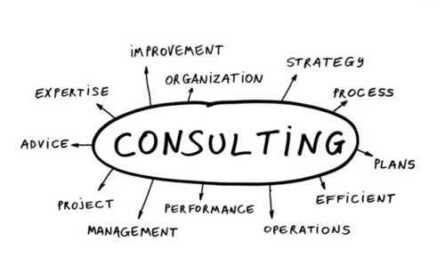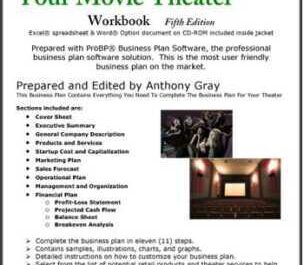CHAPTER 4-: This is the fourth chapter of the “Complete Guide to Starting a Photography Business.” “- So we considered all the requirements to start a photography business. We also took it a step further by analyzing and writing a sample photography marketing plan backed by actionable guerrilla marketing ideas for the photography industry. In this article, we will provide a detailed example of a photography business plan template.
It is often said that it takes money to make money. In business terminology, this means that you need a set of capital investments to keep your business running smoothly. In other words, you need to secure financing for your business. The word “financing” is actually one of the most common things you can hear from any budding entrepreneur. The reason is that funding is scarce and not always readily available.
This does not mean, however, that sources of funding are difficult to find, few in number, and far apart; this essentially means that using the funds and finding the right people interested in financing your business can be a tall order. You may or may not be able to overcome it during the early stages of your entrepreneurial career.
The need for a business plan for photographers
As important as funds are for acquiring funds, there is something to worry about before seeking investors for your business. One of the prerequisites for starting a photography business is having a specific and comprehensive business plan for your future business. Having a business plan isn’t just a fancy option that you can accept or reject. Instead, you need to make sure your business uses the gold mine of investors and plentiful funds.
In other words, writing a business plan is a prerequisite for securing funds for your business. You cannot expect investors to find your business trustworthy unless you have a clear business plan that clearly outlines all of your strategies and policies for success in the industry. Creating a business plan is the best way to convince your investors and beneficiaries. that your business has everything it needs to not only survive in the competition, but also to be successful.
I. A way to convince creditors
For example, if you approach a bank hoping to convince them to provide you with significant financing for your business in the form of a bank loan, you need to develop a business plan that is sufficiently impressive and unique that the employee from the bank knows what your business will have in photography. the right direction for the future and has all the potential for success in modern business. sphere. If you think of your business as a long-term project, then a business plan is nothing more than a project plan. Style
Without prior project submission, you cannot expect a project to receive approval from the highest ranks. Likewise, a business is unlikely to receive funding from any form of investor unless you have a business plan to show them exactly why your business is worth its money. Simply put, you, the future owner of the photo business, are solely responsible for convincing them that their money will be spent wisely on your business and not be wasted.
II. One way to move your business forward
However, the goal of creating a business plan is not limited to ensuring the availability of funds. In this regard, there is much more than it seems. Every business needs a constitution or guidelines to comply. While articles and books can help you grow your business according to the founding principles and practices of exemplary entrepreneurship, there is virtually nothing like a business plan when it comes to providing insight. of your company.
A business plan is created with the aim of guiding the business or directing it towards success and prosperity. It acts as the backbone of your business and helps you turn your future business into the right structure. You will find yourself in countless situations where your head is dry or blank with thoughts of how to get your business out of the trench that you or your professional photographers have pushed it into. This trench can be a symbol of financial distress or any other predicament that takes hold of a business and threatens its success or existence, that is, when you need to go back to your business plan and find the right formula for redemption and recovery.
iii. Detailed guide
Your business plan should contain all the information you need to teach you how to keep your business up to date and stay afloat in this hostile and highly competitive financial world. Quite simply, a business plan should serve as a guide for your business that you can use in times of disaster and when you need to increase your ability to make money. This will serve as a constant reminder of the principles and standards you have developed for your business.
In order for your business to grow and be successful, you must adhere to the principles and standards that you have created. photography for your business. Straying from this act of commitment will cause you to get lost and upset. The business plan should clearly define the goals, objectives and ambitions of your business. If you don’t focus on these goals and objectives as a business owner, your business will become finicky and you will be faced with enormous pressure that a competitive industry will put on your shoulders.
The next thing you know, your business will start to collapse under the pressure, and a lack of commitment to a business plan will prevent you from consolidating your business in these tough times. you are likely to declare bankruptcy within a few months. It is so important to have a specific business plan.
Why do photographers need a business plan
One of the biggest mistakes aspiring entrepreneurs make when looking to start a photography business is assuming that such an organization doesn’t need a business plan. From their perspective, the photography industry is more of an artistic institution and therefore the experience behind the camera is enough to generate dividends in the industry. This is not true.
Whether the service is in the form of marketing advice or wedding photography, the meaning of the business plan does not change with changes in the product or product on which the business will be based. In fact, the photography industry needs a business plan more than other types of businesses, as owners of such an organization can easily be confused by the blur between art and business. the picture. The two should be separate from each other and have a clear relationship. A business plan ensures that it helps you do this by focusing on the business aspects.
Writing a business plan for your photography business
Now that you have a clear understanding of why a business plan is essential to the existence of your photography business, you need to learn more about the different aspects of a business plan and how to create it. If you’ve never created a business plan before, or even seen one, then it’s okay for you to think of a business plan as essentially a very long essay justifying your need for someone’s money. one else.
However, this is not the case. A business plan is not just a text when you explain why our business is different, but rather detailed information that is structured, organized and divided into different segments related to the individual characteristics of your business. As varied as the information contained in a business plan may be, you should remember that all of this information is included for the sole and primary purpose of providing clear guidance for your business to move forward in the industry.
Clear direction is the key to a profitable business. Below is a list of 6 simple steps to help you create the ultimate business guide – a business plan. Follow these 6 simple steps faithfully and you’ll never need another veteran to teach you how to run your business. although you are encouraged to listen to their advice from time to time to make sure you don’t miss a thing.
1) The main objectives of your business
This is the part of the business plan that tells the reader exactly what your business is. This acts as an introductory form for your business. You educate them about your business goals and ambitions and familiarize them with the goals your business strives to achieve every day. This section should ideally be no more than a short paragraph that describes the general intent of your business and contains a simple but ready-made mission statement that should impress most readers, especially bank employees. . This is not the place for you to add fluff or redundant information. Writing a business plan is not like writing a book,
Be concise and to the point. The last thing you want is for people who want to invest in your business to get bored explaining your goals in detail. Many budding entrepreneurs go too far with their mission statement, so be extremely careful not to go overboard. Look for clarity and conciseness – the point of communicating your goals is simply to tell them why you are embarking on the process of starting your own photography business and how you will overcome their challenges. 2) A summary or abridged version of your business plan
Your entire photography business cannot function as one. Rather, it should be viewed as a collection of different segments and sections. Therefore, in a business plan, you should provide a concise explanation of all the different segments and sections that make up your business. Again, brevity is the key here. You are not going to write a 10,000 word essay. A short, short summary will suffice as long as your words are clear.
a) Concept -: The first thing you need to mention is your business concept, where you tell readers about the origins of the idea of starting a photography business. You should also let them know what kind of customers you want to serve in your business. Three or four statements should be enough to describe it all.
b) Product and service -. This section should be devoted to information about the types of products and services that will allow you to generate a steady stream of income and income. In addition to naming the products and services in the field of photography, you should briefly explain how you are going to provide the products and services you have mentioned.
c) Market research -. In this section, you don’t need to provide a detailed explanation of all the different marketing strategies you want to use. Briefly explain to your readers how you plan to reach your customers. If you want, you can post a sample or two that demonstrate your marketing knowledge and research skills.
d) Financing -: This section will now be very interesting for people who can finance your business. Talk about the upfront funding and how you plan to get it. List any other funds you will need to pay for expenses in your first year of employment and the type of income you expect to receive in your first year of employment. Don’t leave important information behind as you write this particular section. That said, don’t overdo your explanations and try to be as brief as possible without leaving the business as a business owner in dire need of money.
3) Description of your company photo
A company contains several main activities that define it. Corporate photography is no exception, of course, and this section lists all the major activities that will help keep your business running smoothly. You can then include your business name and other related information, such as location and business identity, in the word online, especially on social media.
Once it gets out of that way, you can focus on letting readers know about your future ambitions, such as where you expect your business to be in the next few years. Always try to be reasonable in your predictions and try not to overestimate or underestimate the success of your business. You will also need to provide information about the structure that your business will follow and the reasons why you have chosen that particular structure.
4) Description and explanation of SWOT – strengths, weaknesses, opportunities and threats of your photography business.
This is perhaps the most important section of your business plan as the information provided here will be of use to you for many years to come during your time in the industry. As the name suggests, this part of the business plan will look at the strengths and weaknesses of your photography business and consider the different opportunities available to your business, as well as the threats that could put your business in the spotlight. danger. if it is not treated accordingly.
It is important to note that honesty is the best policy when it comes to identifying the strengths and weaknesses of your business. Exaggerating your strengths or hiding your weaknesses will not do you any good, but will only confuse you when you refer to the business plan later. In other words, lying in a business plan is like lying to yourself and your employees.
Honesty in these areas will help you understand your weaknesses and weaknesses in management ability. Lack of understanding of your own skills will be a barrier to improvement. For example, if you are not aware of your inability to quickly adapt to the latest trends in photography, like fisheye, then you will be lagging behind your competition and not be able to dominate your niche market.
5) Evaluate and analyze your market
SWOT analysis and market analysis go hand in hand to a large extent. All of your strengths and weaknesses relate to the demands, demands and trends of the niche photography market that your business relies on. When you write about market analysis in your business plan, it is important for you to show that you understand your customers better than you understand yourself. The market should be described in the following terms.
- Who is the target audience?
- Where is the target audience?
- What is the size of the target audience at the location you marked?
- What is the purchasing power of the target audience?
- How stable is the market and where do you see the market in 10 years?
- What factors affect the target audience?
- What is price sensitivity?
- What is a competitive advantage and how do you get it?
6) Sales and production targets
This section of the business plan should be fairly straightforward and should be created with a straightforward approach. When you are in the photography business, you should have an estimate of how many clients you are willing to meet on a monthly or yearly basis. It’s a goal your employees will strive to achieve.
Other aspects of a photography business plan
The 6 steps above are absolutely essential in creating a business plan. You can include other features of your business in your business plan, including growth projections, HR policies, administrative structure, and advertising policies. The creation of a business plan is of course not a one-off affair. It is something that you need to incorporate into your daily business practice.









































